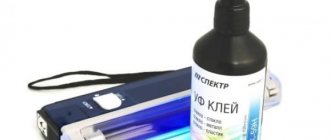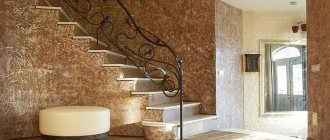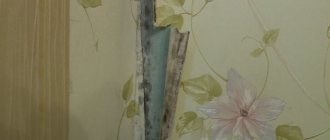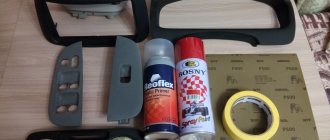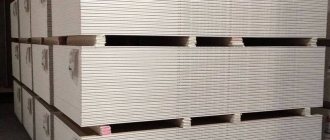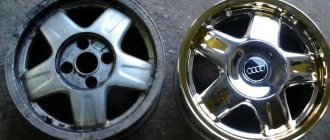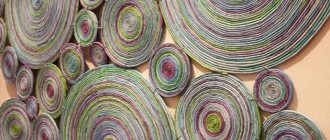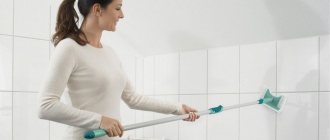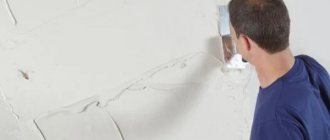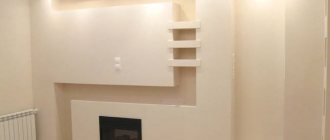Everyone knows the abilities of superglue, which can cope with urgent work at home. Using it, you can glue various materials, but still, the difference from special compounds is significant. You can strengthen the bonding of the necessary parts by adding baking soda to the glue. The combination of moment glue and soda leads to heating and speeds up the gluing process. The method is popular and will be covered in this article.
Combo set
Interaction process
Superglue began to be produced quite a long time ago.
There are no solvents in its composition, but it contains cyanoacrylate. As you know, superglue begins to act within a couple of seconds, so it is great for unexpected situations. It is sold in a regular tube because superglue is one-component.
Superglue is not suitable for large areas because it starts to dry out quickly. Superglue also comes in two components: one bottle with the main composition, and the second with an alkaline agent.
When these tubes are mixed, the resulting superglue has a very high level of strength.
This is obtained due to the reaction to alkali, this is the principle of interaction between soda and cyanoacrylates. Under the influence of alkali, a rapid setting reaction occurs. The finished product is similar in all respects to acrylic.
This combination of baking soda plus superglue is great for repairing plastic or plastic products, as it resembles plastic.
When drying, a high temperature appears. This increases the level of adhesion, so the connection of the part will be even stronger.
This mixture is very strong, so it is suitable for plastic with other materials, it closes even deep cracks, and can help with the repair of bad mechanisms.
This adhesive mixture with soda is suitable for motorists, engineers, and will also not be out of place in the house.
Types of miracle glue
A piece of glass has broken off a shelf, a stone countertop has cracked, or a wooden piece has burst - all these problems can be eliminated by using superglue. There will be no problems with the purchase, but in order to choose the right composition, you need to roughly navigate the typology of glue. Each of them has its own disadvantages and advantages.
All glue is classified according to the number of components it contains into two types:
- One-component. Received the greatest distribution. The composition contains ethyl cyanoacrylate, due to which setting occurs after a few seconds. But for the process to be completely completed, it takes a day. Mainly used for fastening small parts.
- Two-component. When purchasing at a hardware store, what immediately catches your eye is the set of two tubes with different contents. When both components are combined, they react, so they require separate containers. The components are mixed immediately before use. No more than 2 minutes are allowed to complete the work. The glue is then covered with a film and hardens.
Two-component
Instructions for using this composition for repairs
The resulting mass of superglue and soda is great for various repairs.
It does an excellent job of repairing broken parts, for example, it can glue a screw, fill defects and chips, and also glue broken pieces into one whole.
During the work process, you should follow a certain work algorithm for repairing plastic products:
- The surface should be thoroughly cleaned using a suitable cleaning material (this is necessary for deep cleaning of dirt);
- Next, you need to remove grease from the surface using a rag and solvent (otherwise the material may peel off);
- Next, take soda and pour it onto the treated surface;
- Superglue is poured onto the soda;
- Quickly connect parts together;
- Blow on the part to remove any remaining soda;
- You need to wait 15 minutes, then you can grind and polish the surface.
Method 2. Less neat, but simpler
The second option for repairing the product is considered the simplest and is suitable even for those who are not well versed in repairs. The result is not as neat as in the first case, but the process itself is very simple. The repair proceeds according to the following scheme:
- A small amount of Super Glue is applied to the two broken parts. After which they are connected to each other and, if possible, fixed.
- A small layer of soda is distributed on top.
- The product is fixed for 3-5 seconds - just put it aside so that the seam is not disturbed.
In principle, this is enough. After 2 hours, the most durable gluing is obtained, even in the case where the soda did not have direct access to the joint of the parts being joined. If there is a need to build up the bonding layer, the procedure is repeated the required number of times.
Advice! Using the “right” soda will simplify the polymerization process. It should be of uniform consistency, without pebbles or raw grains. The smaller the soda grains, the better.
Using superglue for cleaning
Almost every apartment still has old cast iron utensils, such as frying pans.
Most often, they do not look very good in appearance, because soot and fat are deposited on them. But there is one trick with which you can easily clean objects from such contaminants.
To do this, you need to take ordinary soda, simple laundry soap and silicate glue. Instead of regular soda, you can use soda ash, the result will be even better. Here is a detailed algorithm of actions:
- Water is taken into the container;
- Place on the fire and wait until the water boils;
- Grind the soap on a grater, add it to water and mix;
- Reduce heat and leave the simmering pan over low heat;
- Add a glass of soda and superglue, totaling 100 ml;
- The room should have good ventilation (if possible, then this procedure is generally best done outdoors);
- Dirty dishes are lowered into the resulting boiling mass (without plastic parts, they must first be removed);
- Boil for an hour, then remove from heat;
- Leave the dishes in the solution for another couple of hours.
After several hours, the dishes are taken out and cleaned of soot and grease using an aluminum sponge or scraper; this procedure is quick and easy.
After completing the procedure, wash the dishes in clean water.
This method can only be used to repair metal products; plastic products are strictly prohibited.
Links
geektimes.ru/post/257302 (2012, monitor repair with soda) www.drive2.ru/b/1847805 (2015, pay attention to the tape, but not a word about its relationship with the target audience) datagor.ru/practice/diy-tech/ 1203-khitraja-rabota-super-kleem..html (2010, and what a way to hide the text from free access) www.rmnt.ru/story/decoration_paint/499915.htm scalewiki.ru/cyanoacrylate
UPD:
geektimes.ru/post/258714 (about dental materials, very interesting)
www.bondic.com - liquid photocurable polymer in a tube, and immediately assembled UV LED
Then another crazy idea came to my mind: a hybrid chemical “jet” 3D printer
, printing cyanoacrylate with an aqueous solution of a slightly alkaline agent, with an FDM extruder for printing polyethylene or polypropylene formwork. A drug addict's holiday, in short.
Problems
- Print speed (not clear what).
- Poisonous a.
- Difficulty storing consumables (a barrel of Cosmophene, they say, dries out in 8 months).
- Difficulty in printing in domestic conditions (the air is humid).
- Heating the workpiece (exothermic polymerization reaction).
- Part destruction at 80..100 degrees Celsius.
- Delamination of formwork, shrinkage during cooling.
There are probably still a lot of problems :)
For bumper repair
Bumpers in cars are made of special plastics, so superglue and soda can be used to repair them.
If chips or minor defects appear, then it is not necessary to go to a car service; you can do all this yourself using the mixture.
First, the bumper is removed from the car. It must be cleaned of dirt and dust, cleaned with sandpaper, and then degreased with a solvent.
Afterwards, an adhesive is poured onto the defect, and soda is immediately poured onto it. This action needs to be done several times.
In order for the adhesive to set perfectly, the bumper must be left for 30 minutes and not touched at all.
After complete drying, excess superglue is removed, and the area itself is sanded and polished. In addition to the bumper, this is also how they repair other parts in the car, for example, headlights and so on.
Formwork
Let's continue the associative series: instant glue, soda and... regular adhesive tape. It is made of polypropylene, and cyanoacrylate ignores it. This means: don’t tear it off, just remove it. Taking into account the transparency and self-adhesiveness, ordinary “adhesive tape” produces an excellent formwork, giving the part its shape even at the polymerization stage.
Since the part is poured layer by layer, the process is reminiscent of 3D printing in the steampunk genre (instead of water vapor - toxic fumes of cyanoacrylate). The tape is then easily removed, remove it a little with a file, and you're done! You can do both repairs and strange art (only with safety glasses and a respirator mask, perhaps).
Part of the armrest of one of my cars. Thin hinges made of ABS plastic were broken out “with meat.” The basic shape of the new hinges was given by transparent tape, which was easily removed.
Application in monitor repair
Monitors are attached to a plastic stand, which breaks quite often.
This happens because the monitor is used carelessly or the weight of the monitor does not match the size of the stand.
Sometimes epoxy resin can be used for repairs, but it is not suitable for plastic, so you can safely use superglue with soda. The instructions are:
- All chips must be cleaned;
- The area is cleaned with sandpaper;
- Remove fat with alcohol;
- Sodium bicarbonate is applied to the edges of the chip;
- A large amount of superglue is poured onto the soda;
- After complete drying, blow off excess powder;
- The surface is polished;
- New holes need to be made for the screws;
- Reassemble the stand;
- If necessary, paint it black.
Filling voids
Using an adhesive composition with soda, you can fill the voids that form after an impact or breakage.
They also remove pits and depressions on other products. For such minor repairs, plastic products do not need to be sanded with sandpaper; just wipe off the grease is enough.
But materials other than plastic still need to be rubbed down. First, pour soda into the void, then pour glue so that it saturates the powder well. It is necessary to make sure that there is a sufficient amount of superglue available before starting work.
If the void is quite large, then it must be filled gradually in layers so that there is no soda left in it without impregnation, otherwise the quality of the adhesive joint will be poor. The seam can be polished and sanded only after 30 minutes.
Super remedy
When interacting with individual substances, soda manifests itself differently. There are many options for reacting sodium bicarbonate, and descriptions where the results of such reactions can be applied. The same thing happens with superglue. As soon as the alkaline component interacts with the glue, polymerization occurs and strong adhesion occurs.
The reaction of the glue with soda proceeds with the release of temperature, so in just a few seconds strong bonding occurs. Thanks to this effect, this method is suitable for fixing parts made of different materials together.
Repair of product reliefs
A mixture of superglue and soda is used not only to repair surfaces and restore parts, but also to restore the figured part of the product.
For example, this applies to repairing blades in parts and so on. First you need to do the stripping and degreasing as usual.
And then glue is applied to the broken area and thoroughly sprinkled with soda so as not to miss a single area. This procedure must be done until the desired part shape is obtained.
In some cases, a little of this composition is needed, and in others more. Grinding and polishing will help give the final appearance.
Reviews
Evgeniy, 45 years old
Igor, 31 years old
Elena, 27 years old
Cyanoacrylate and sodium bicarbonate, upon interaction, instantly enter into a chemical polymerization reaction, leading to the formation of a durable material that provides “dead” bonding to plastic structures.
Expert opinion
Advice!
Combining components with water at high temperatures allows for deep cleaning of metal structures at the molecular level.
The above qualities served as the basis for widespread use in everyday life and restoration of lost functions with objects of everyday use.
Have you shared the article with your friends?
Not really
Precautions
Complete drying of this adhesive composition occurs almost immediately, a couple of seconds is enough, so you need to work quickly and carefully.
You should always use gloves, otherwise your fingers may stick together. And this is quite painful. If the glue does end up where it is not needed, it is quickly removed using acetone. This also needs to be done if the skin has managed to stick to your hands.
Then take a cotton wool disc and moisten it with acetone. Apply it to the glued area and wait half an hour.
Then the dissolved composition is carefully removed. To avoid pouring a lot of soda, pour it out using a funnel or take a pinch at a time.
Since cyanoacrylate emits toxic fumes, when working with such an adhesive composition it is necessary to have excellent ventilation.
Why else is instantaneity needed?
It is precisely its immediacy, it seems to me, that attracts the above-mentioned BONDIC. Human laziness and impatience are a great sales driver. A handheld 3D printer in your pocket.
But let's get back to soda. I had to drill a thin hole twice the length of the drill itself, and even with the drill stand I bought, it's not as easy as it looks. Again I remember the joke about two tunnels. This is where the main property appears: the rate of polymerization. Missed? No problem, we carefully “bury” the hole back, adjust the drilling rig and drill again, luckily everything hardens instantly. Not every material forgives mistakes so quickly and easily.
almost free add-on
sorry for the quality
